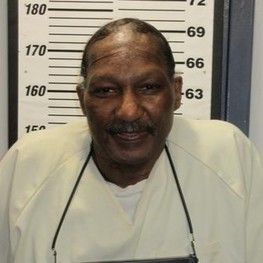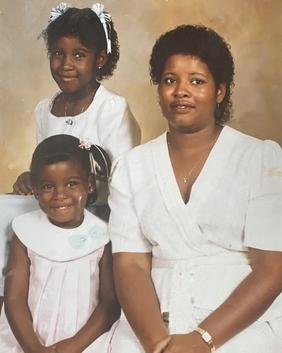
b: 1956
Byron Lewis Black
Summary
Name:
Years Active:
1988Birth:
March 23, 1956Status:
Awaiting ExecutionClass:
MurdererVictims:
3Method:
ShootingNationality:
USA
b: 1956
Byron Lewis Black
Summary: Murderer
Name:
Byron Lewis BlackStatus:
Awaiting ExecutionVictims:
3Method:
ShootingNationality:
USABirth:
March 23, 1956Years Active:
1988Date Convicted:
March 8, 1989bio
Byron Lewis Black was born on March 23, 1956, in the United States. While details about his early life remain limited, by the mid-1980s, Black had entered into a relationship with Angela Clay, a 29-year-old mother of two young daughters, Latoya and Lakeisha. Angela was estranged from her husband, Bennie Clay, at the time and was navigating the challenges of raising her children while separated.
Black had a troubled history of violence even before the fatal events of 1988. In December 1986, during a dispute with Bennie Clay, Black shot and wounded Bennie in the shoulder. This incident led to Black being convicted of a felony and sentenced to two years in prison. However, he was granted work release during his incarceration, allowing him to be temporarily out of prison during the day for employment. Despite this prior conviction and his violent tendencies, Black maintained a relationship with Angela, which would ultimately end in tragedy.

murder story
On March 28, 1988, while on temporary release due to his work release program, Byron Black traveled to Angela Clay’s residence in Nashville, Tennessee. Inside the apartment, located at 1101 Wade Avenue, Apartment B, Black carried out a brutal triple murder that shocked the local community. Angela Clay was sleeping in the master bedroom when Black shot her once in the head at close range. The shot killed her within minutes.
Nearby, nine-year-old Latoya Clay was confronted by Black and shot twice—in the neck and chest—from a distance of approximately two feet. Latoya survived only a few minutes before succumbing to her injuries. Six-year-old Lakeisha Clay was in another bedroom and tried to defend herself during the attack. Black shot her in the chest and pelvis at very close range. Lakeisha suffered a painful death, dying between five and thirty minutes after being shot.
Police were alerted after Angela’s family members grew concerned when they could not reach her. Responding officers discovered the horrific scene inside the apartment, where all three victims were found dead. The killings were described by investigators and prosecutors as particularly “atrocious” and “brutal,” leaving a lasting emotional scar on the surviving family members.
In the investigation that followed, police identified Byron Black as the primary suspect. While there was little direct biological evidence tying him to the murders, ballistics testing revealed that the bullets used in the killings matched a gun previously used by Black in the 1986 shooting of Bennie Clay. On April 21, 1988, Black was arrested and charged with three counts of first-degree murder.
The trial began in February 1989. Black denied responsibility for the murders, at times claiming he had discovered the bodies himself and providing an alibi defense. Despite these claims, on March 8, 1989, a Davidson County jury found him guilty on all three counts of first-degree murder. Assistant District Attorney Eddie Barnard called the murders the worst triple killing the county had seen.
The sentencing phase followed immediately. On March 10, 1989, for the murder of six-year-old Lakeisha Clay, the jury unanimously recommended the death penalty, and Judge Walter Kurtz sentenced Black to die by electrocution. The jury could not reach a unanimous decision for the other two murders, resulting in Black receiving two consecutive life sentences for killing Angela and Latoya. Additionally, he was sentenced to 15 years for burglary and 10 years for firearms violations.
Black’s execution was initially scheduled for November 20, 1989, but was stayed as he began a lengthy appeals process. For decades, he filed numerous appeals challenging his conviction and death sentence, arguing mental incompetency, intellectual disability, and other procedural issues. Appeals were rejected repeatedly by state and federal courts, including the Tennessee Supreme Court and the U.S. Supreme Court.
In 2022, a new law allowed death row inmates with intellectual disabilities to seek relief from execution. Both Black’s defense and Davidson County District Attorney Glenn Funk agreed that Black should be exempt from capital punishment. However, after hearings and reviews, judges found that Black did not meet the criteria for intellectual disability, upholding his death sentence in 2023.
On March 3, 2025, the Tennessee Supreme Court set a new execution date for Black: August 5, 2025. Ahead of the execution, Black’s attorneys raised concerns about an implanted defibrillation device that could cause unnecessary suffering during lethal injection. A Nashville court ordered that the device be deactivated before the execution but denied any delay in carrying out the sentence.
As of 2025, Byron Lewis Black remains on death row at the Riverbend Maximum Security Institution. More than 37 years after the murders, Angela Clay’s surviving family members continue to seek justice, expressing that only the final carrying out of Black’s sentence would bring closure to the decades-long ordeal.